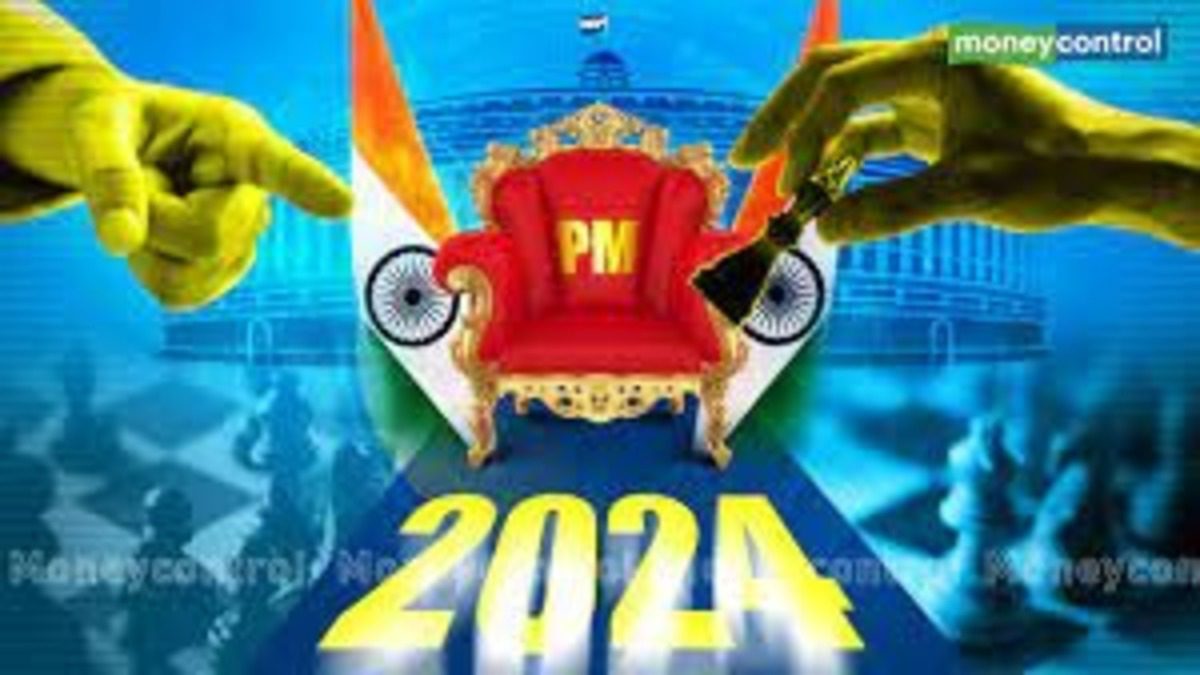The who’s who of Indian politics warming up for kaun banega prime minister 2024
As the forthcoming elections for the largest democracy draw near, an influx of polls inundates the discourse. With the departure of allies such as the Rashtriya Lok Dal (RLD) and the Trinamool Congress from the INDIA bloc, and the reorientation of the Telugu Desam Party (TDP) under Chandrababu Naidu and the Janata Dal (United) (JD-U) under Nitish Kumar towards the National Democratic Alliance (NDA), the Bharatiya Janata Party (BJP)-led coalition emerges as a conspicuous favorite in these surveys. Meanwhile, the opposition finds itself in disarray.
Expressing confidence in the NDA’s triumph, Prime Minister Narendra Modi has set a lofty target of securing over 400 seats in the imminent polls. Various surveys indicate that the NDA could potentially clinch anywhere between 335 to 398 seats, whereas the INDIA bloc may secure 93-166 seats.
Opinion polls often provide a directional insight, yet their seat projections frequently veer off course in numerous elections.
The uncertainty surrounding the outcome of the 2024 elections stems from three key factors.
Indecisive Voters In India, a substantial portion, ranging from 25% to 30%, of voters finalize their choice on the day of voting or just days before the polls, as revealed by reports from the National Elections Studies conducted by the Centre for the Study of Developing Societies (CSDS) over the years. This indicates a sizable cohort of voters who remain ambivalent until the eleventh hour, capable of swaying the electoral outcome in any direction.
Merely 36% of voters have a predetermined party preference even before the commencement of the campaign; 12% decide post-candidate announcements, while 18% make their choice during the campaign period.
According to the Axis My India 2019 exit poll, this figure escalates to 43%. Survey data underscores the significance of extensive, month-long campaign periods. Approximately 43% of respondents disclosed that they made their final decision either on polling day (14%) or in the days leading up to it/after community gatherings (29%).
The states with a high percentage of late deciders include Odisha (68%), Maharashtra (56%), Jharkhand (63%), Chhattisgarh (55%), Telangana (57%), Bihar (55%), and West Bengal (50%). With the exception of Chhattisgarh, all these states witness triangular or multi-cornered contests. These states, predominantly from the Eastern region, see at least half of their electorate making their electoral choice at the eleventh hour.
Limited Loyal Voter Base Only 31% of respondents in the Axis My India 2019 exit poll professed loyalty to a single party, steadfastly supporting it election after election. This suggests that merely 31% of the populace are fervent, ideologically aligned supporters.
During the 2009 Lok Sabha elections, despite securing an 18.8% vote share, the BJP conceded defeat to the Congress, which garnered 28.6% of the votes. This marked the BJP’s poorest performance since 1991. In contrast, during the 2019 Lok Sabha elections, the Congress garnered 19.7% of the votes against the BJP’s 37.7%. This constituted the Congress’s worst electoral performance to date. The cumulative lowest vote share for both parties stood at 38.5%. Adjusting for the leadership factor, this closely aligns with the percentage of loyal voters as indicated by the Axis poll. It can be inferred that the current Congress supporters are largely loyal, akin to the loyal or ideological supporters of the BJP who rallied behind the party during its 2009 electoral setback.
Approximately 70% of voters sway in their allegiances from one election to another. The remaining 31% are loyal supporters, nearly mirroring the 36% of individuals who decide their vote prior to the commencement of campaigns.
States with a substantial presence of loyal voters include Uttarakhand (60%), Gujarat (52%), Rajasthan (48%), Andhra Pradesh (44%), Madhya Pradesh (44%), Uttar Pradesh (38%), Kerala (37%), and Haryana (36%). These states, with the exception of Kerala and Andhra Pradesh, witness predominantly bipolar contests between the BJP and the Congress, while Kerala and Andhra Pradesh respectively witness contests between the Congress and the Left and regional contenders.
Influence of Local Candidates For 25% of voters, the local candidate emerges as the paramount factor in determining their choice, according to the Axis My India exit poll of 2019. Thirty-seven percent prioritize the prime ministerial candidate, 22% focus on the party symbol, 3% on manifesto pledges, and 13% on miscellaneous factors.
With many parties yet to finalize candidates for all constituencies, the ‘candidate’ factor remains unaccounted for in most early opinion polls. It bears emphasis that nearly 12% of voters decide their preference after the candidates are announced. The 25% share of individuals prioritizing local candidates represents a substantial bloc, surpassing the 18% lead the BJP held over the Congress in 2019.
Early opinion polls, while often directionally accurate, may err in their seat projections due to these factors.
In the 2009 elections, the UPA’s anticipated tally stood at 257 seats, as per an agency, yet it secured 262 seats. The Congress, predicted to attain 144 seats, ultimately bagged 206.
In the 2014 elections, the NDA was forecasted to triumph in 275 constituencies, but it surpassed expectations with 336 seats. The BJP, projected to secure 282 seats, emerged victorious with 282 seats.
During the 2019 elections, the NDA’s projected tally was 285 seats, yet it secured 353. The BJP exceeded its projection of 248 seats by 65.
These statistics and trends offer both encouragement and caution to both supporters and adversaries of the BJP. While the former may harbor aspirations of the NDA crossing the 400-seat mark, drawing from past instances of opinion poll underestimations, the latter may find solace in the timeless adage: “the game is still afoot”.
#Election2024 #VotingPatterns #PoliticalAnalysis #IndiaElections #BJPvsOpposition
